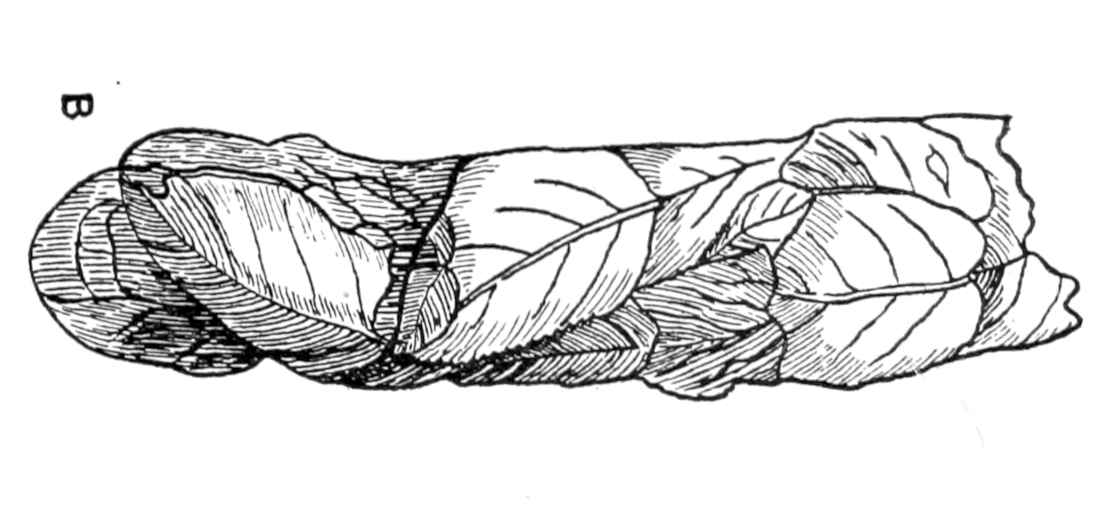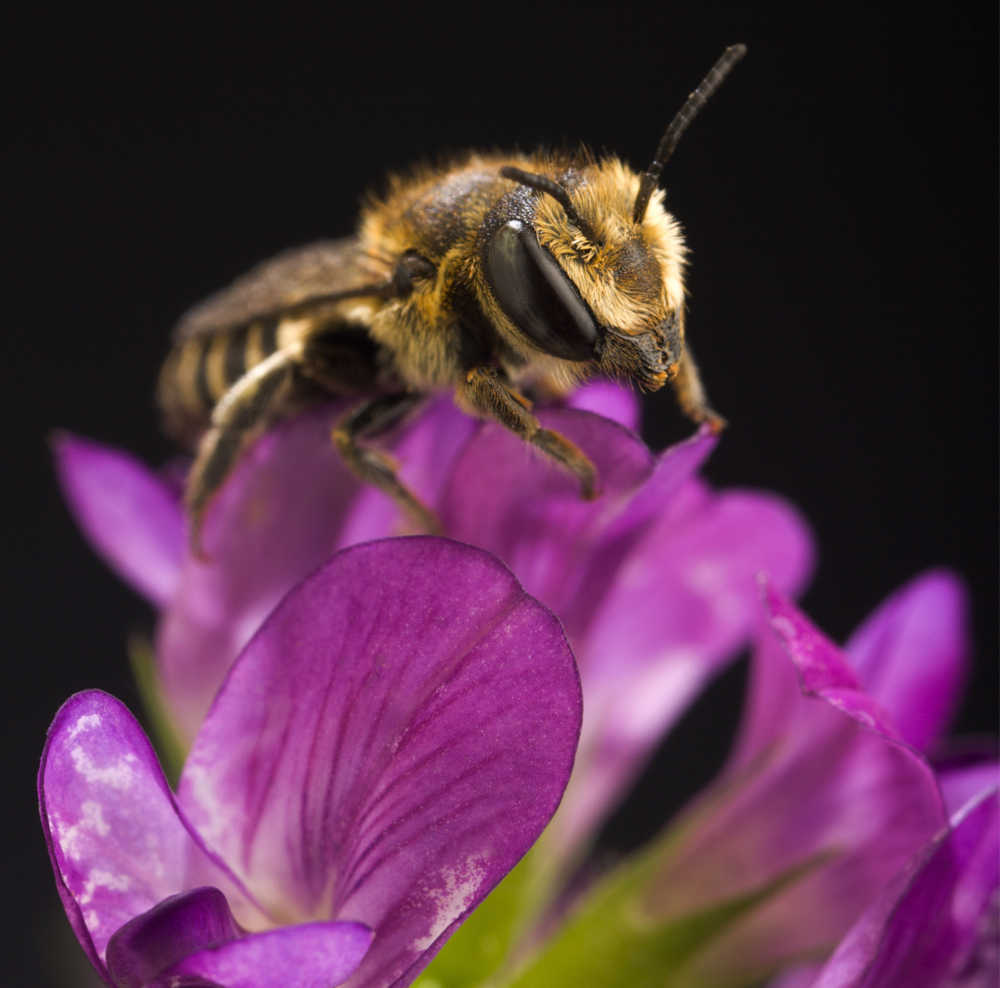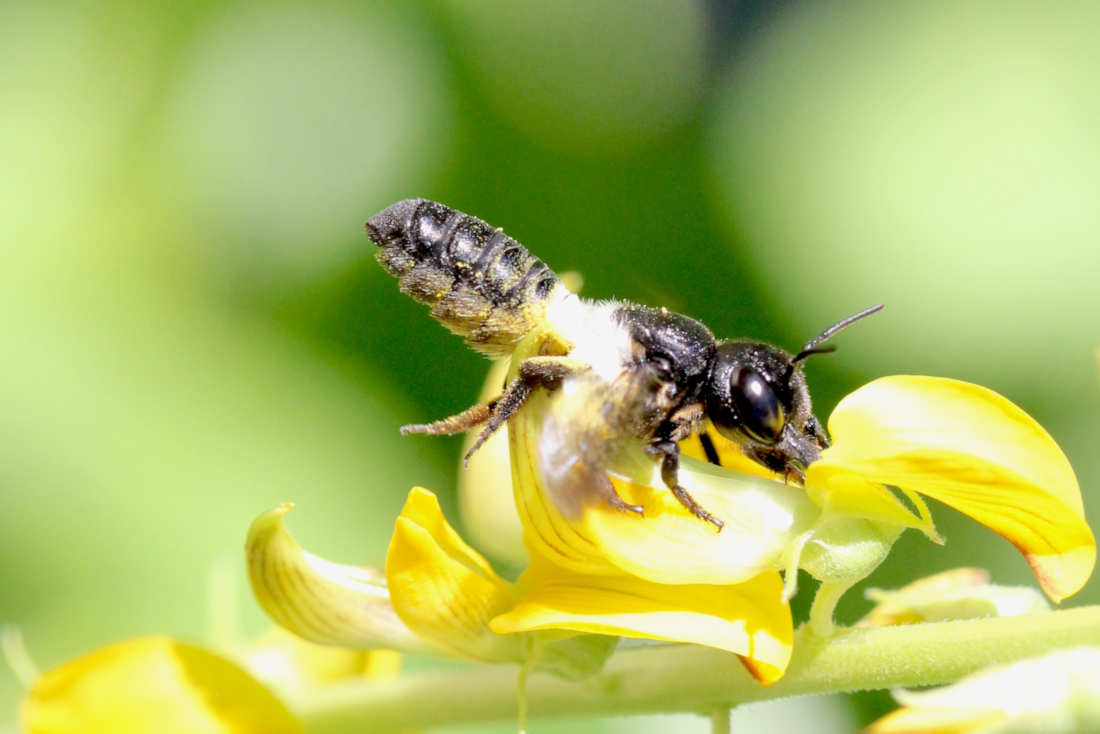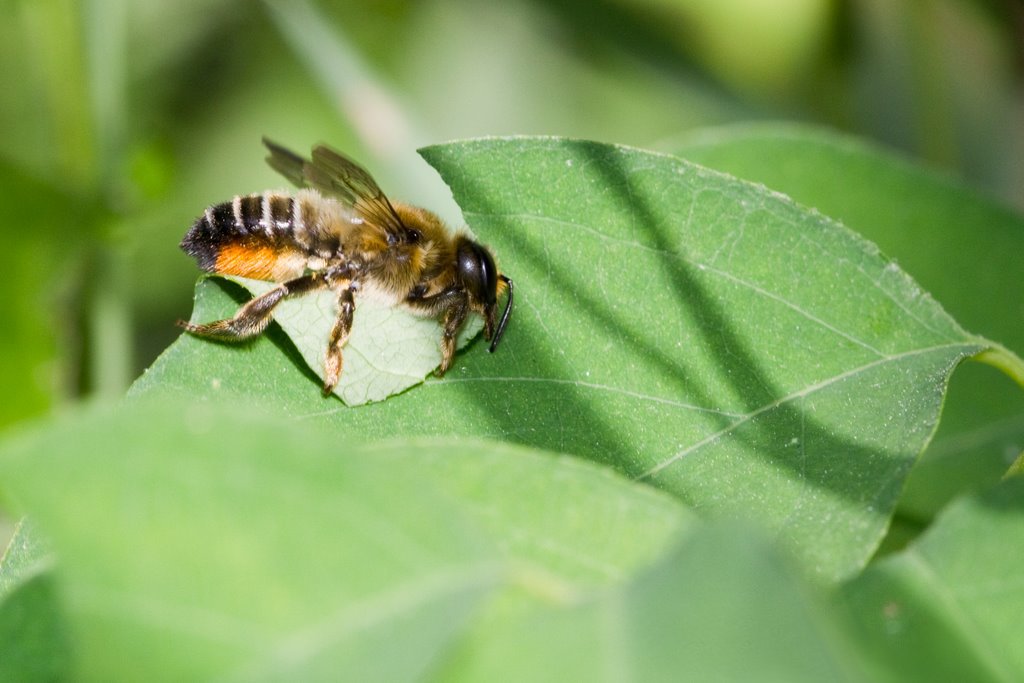Leafcutter Bees:
Leafcutter Bees: Nature’s Gentle Pollinators and the Role of Native Plants
Name: Leafcutter Bee (Megachile spp.)
Number of Species: Over 240 species in North America
Range: Found Throughout the United States
Size:Small: Anywhere from 0.2 to 0.8 inches (5 mm to 20 mm)
Pollination Role: More efficient than honeybees
Social Structure: Solitary—each female builds and provisions her own nest
Aggression Level:Not Aggressive; no colony to defend
Nesting Behavior:Uses cut leaves to build nest cells, nests in hollow plant stems or insect burrows
Pollen Collection:Pollen is carried on special hairs under the abdomen (scopa).
Leaf Cutting: Cut circular or oval pieces from leaves to use as nest material, they do not eat the leaves.
Conservation status:Not Endangered, but all pollinators are experiencing a decline
How to Support Leafcutter Bees: Plant native flowers, leave plant and flower stems in place over winter
Leafcutter Bees: Nature’s Gentle Pollinators and the Role of Native Plants
_at_Work_(7519320658)-web.jpg)
Leafcutter bee taking a cut leaf back to the nest: Image from Bob Peterson - CC BY-SA 2.0 (size reduced for web quality)
Introduction
Leafcutter bees (Megachile spp.) are some of the most fascinating yet misunderstood pollinators in North America. Unlike non-native European honeybees (Apis mellifera), which live in large colonies and produce honey, leafcutter bees are solitary insects. Each female works independently, constructing her own nest and provisioning it with pollen for her offspring. Because they have no hive to defend, they are non-aggressive and pose no threat to humans, making them an ideal pollinator to welcome into gardens and natural spaces.
While honey bees often receive the most attention, they are just one species among thousands. North America alone is home to over 4,000 species of native bees, each playing a crucial role in pollination. Leafcutter bees belong to the Megachilidae family, which includes other important solitary bees such as mason bees and resin bees. There are over 240 species of leafcutter bees in the United States. These native pollinators are often more efficient at pollinating certain flowers than honey bees, as they use different techniques to collect and transfer pollen. Leafcutter bees, in particular, are known for their ability to pollinate open-faced and deep-throated flowers, making them vital for the reproduction of many wildflowers, fruits, and vegetables.
One of the most distinctive behaviors of leafcutter bees is their habit of cutting circular or oval pieces from leaves to build their nests. While this might seem destructive, these cuts do not harm the overall health of the plant. More importantly, leafcutter bees are incredibly beneficial, and understanding their role in the ecosystem can help gardeners and conservationists support them more effectively.
Gentle, Solitary, and Non-Aggressive
A common misconception is that leafcutter bees pose a threat to humans, but in reality, they are harmless and rarely, if ever, sting. Because they are solitary bees, they do not have a colony to defend, making them far less aggressive than European honey bees and wasps. If handled, a female may sting in self-defense, but her sting is much milder than that of a honeybee and is rarely felt. Male leafcutter bees lack a stinger entirely. These bees are far more focused on gathering pollen and constructing their nests than engaging with humans. Their non-aggressive nature makes them a perfect addition to any garden or natural area.
Expert Pollinators: The Buzz Behind Their Importance
)_(35414071170)-web.jpg)
Leafcutter bee closeup - Notice the underside of the abdomen full of pollen. This is an easy way to identify leafcutters.
Leafcutter bees are among the most efficient pollinators, often outperforming the European honey bee in their effectiveness. Unlike honeybees, which collect pollen on their legs, leafcutter bees carry pollen on specialized hairs on the underside of their abdomen, known as the scopa. This unique adaptation allows them to transfer large amounts of pollen as they visit flowers, making them excellent cross-pollinators.
In fact, one of the easiest ways to identify a leafcutter bee is by looking at its abdomen. Unlike other bees, the underside is equipped with dense hairs designed to carry extra pollen. When a leafcutter bee is actively foraging, its abdomen is often packed with bright yellow pollen, making it easy to distinguish from other types of bees.
The Art of Leafcutting: How and Where They Build Their Nests

Drawing of a leafcutter bees nest, made from cut leaves, from Creation by Evolution, 1930. Public Domain.
Leafcutter bees use their sharp mandibles to cut precise, rounded pieces from leaves. These leaf fragments are not eaten but are instead used to construct their nests. The female bee carries the cut leaf pieces to a suitable nesting site and carefully arranges them to form small, cylindrical cells where she will lay her eggs.
Unlike honey bees that build communal hives, leafcutter bees nest in pre-existing cavities in rotting wood which were often made by beetles, other insects, or they find hollow twigs, such as old flower stems. Sometimes they find old insect burrows in the ground to use.
Inside each leaf-lined cell, the female deposits a mixture of pollen and nectar, followed by a single egg. She then seals the cell with another leaf fragment before moving on to construct the next one. Over time, she fills the cavity with multiple cells, ensuring her offspring have the resources they need to develop.
After the larvae hatch, they consume the pollen provided by their mother and eventually pupate within the leaf-wrapped chamber. When fully developed, the young bees emerge and begin the cycle anew.
Which Leaves do they Prefer?
Leafcutter bees prefer thin, flexible leaves that are easy to cut and shape into nesting material. Some of the most commonly used leaves, in my experience, include:
Redbud (Cercis canadensis) – By far the most popular leaf
Spicebush (Lindera benzoin)
Buttonbush (Cephalanthus occidentalis)
Green ash (Fraxinus pennsylvanica)
Virginia creeper (Parthenocissus quinquefolia)
Any leaf that has a soft texture can be used by leafcutter bees.
While some gardeners may worry about the small holes in their plants’ leaves, these cuts are purely cosmetic and do not harm the plant's health. Instead, their presence is a sign that leafcutter bees are at work, supporting the local ecosystem.
Supporting Leafcutter Bees with Native Plants
Native plants play a crucial role in sustaining leafcutter bee populations. Not only do these plants provide the pollen and nectar the bees rely on, but they also serve as sources of nesting material. Some key ways to support leafcutter bees in your garden include:
1. Planting Native Flowers:
Choose a variety of native flowering plants that bloom at different times of the year to ensure a continuous food source. Some excellent choices include: Purple coneflower (Echinacea purpurea), Bee balm (Monarda spp.), Milkweed (Asclepias spp.), New York Aster (Aster novi-belgii)
2. Providing Nesting Sites
Leafcutter bees rely on natural cavities for nesting. You can encourage and support them by a few simple steps:
1. Leaving dead plant and flower stems in place over the winter - the bees use these hollow tubes to hibernate and build nests in.
2. If you have dead wood, fallen trees, or logs on your property, you can drill small holes between 1/8 and 3/8" to a depth of 5-8 inches. These holes are the preferred size for nesting sites.
3. Avoiding Pesticides
Chemical pesticides, especially neonicotinoids, are harmful to insects, including leafcutter bees and other pollinators. Opt for natural pest control methods and encourage beneficial insects like ladybugs and lacewings to keep garden pests in check.
4. Tolerating Leaf Damage
Seeing small, circular holes in plant leaves is a good sign! It means leafcutter bees are nesting in the area. Understanding that this minor damage does not harm plants can help gardeners appreciate these bees rather than view them as pests.
Leafcutter Bees: Tiny Architects with a Big Impact
Leafcutter bees are a remarkable example of how small, solitary creatures play a significant role in our ecosystem. By pollinating native plants, fruits, and vegetables, they contribute to biodiversity and food production. Their unique nesting habits, using leaves as protective wrappings for their young, make them stand out among other pollinators.
As gardeners, farmers, and conservationists, we can help leafcutter bees thrive by planting native species, providing nesting sites, and embracing their presence. The next time you see a perfect semicircle missing from a leaf, take a moment to appreciate the tiny bee that’s working hard to support the environment—one cut at a time.

Leafcutter bee gathering pollen from a flower. Public Domain.
References
"Creation by Evolution: a Consensus of Present-day Knowledge as set forth by Leading Authorities in Non-technical Language that all may Understand". Nature. Vol. 125. February 1930. p. 162. doi:10.1038/125162D0









